This underrated HBO show from the 2000s has been forgotten. Here’s why you should watch it now
- Oops!Something went wrong.Please try again later.
- Oops!Something went wrong.Please try again later.
- Oops!Something went wrong.Please try again later.
- Oops!Something went wrong.Please try again later.
- Oops!Something went wrong.Please try again later.
This article contains affiliate links; if you click such a link and make a purchase, Digital Trends and Yahoo Inc. may earn a commission.
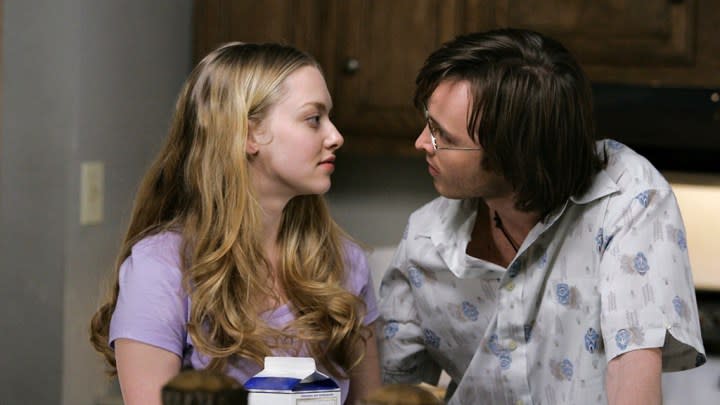
“Best of All Time” TV lists are now as common as the seasons changing, and they tend to highlight shows from relatively recent history. Old standbys such as The Sopranos, The Wire, Breaking Bad, Mad Men, and Deadwood make their almost-default appearances on these lists, with the occasional inclusion of such genre fare as Battlestar Galactica. So where does that leave Big Love, Mark V. Olsen and Will Scheffer’s polygamist family drama, which aired on HBO from 2006-2011?
Its first two seasons aired following The Sopranos, and Big Love, similarly, seems to have been overshadowed in every contemporary discussion about the best of early 21st-century TV drama, despite its being a necessary part of any TV aficionado’s understanding of that form. It differs from its contemporaries in vital, interesting ways, but its bones and blood are made of the same attention to detail and appreciation of craft that made Breaking Bad, say, shine. In the age of the rewatch, when cable TV classics are making inroads among generations who missed them when they first appeared, where’s the love for Big Love in 2024?
Big Love has all the ingredients of a TV drama classic of the noughties
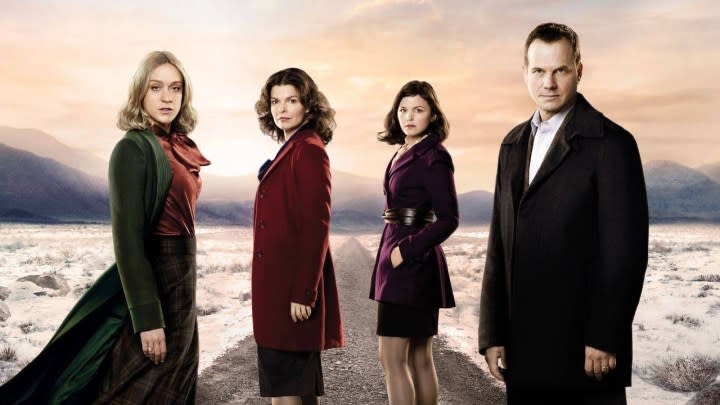
Start with the seemingly upstanding family man with a dark secret: Bill Henrickson (Bill Paxton), proprietor of a Salt Lake City-based chain of home supply stores. In the pilot (aired in 2006), Bill goes about his business in his upstanding Mormon community, only to return home – surprise! – to three contiguous houses on a block in Sandy, Utah, where his three wives and seven children live as a closeted family cluster. (Mad Men recreates this dynamic beat for beat in its 2007 pilot, as Don Draper, a seemingly carefree, bed-hopping singleton about town in Manhattan, returns at the end of a day’s work to a wife and children in Ossining.)
Sandy has its requisite suspicious neighbors (like Hank on Breaking Bad or Stan on The Americans) who are certain not all is well on their block. And is there a patriarchal, devoutly focused crime family that runs its desert town almost unimpeded, à la Sons of Anarchy? Check! Harry Dean Stanton plays Roman Grant, father of Bill’s second wife (Chloe Sevigny). Roman is the leader of an extremist Mormon sect living on a compound in southern Utah, where Bill grew up — until Roman kicked him out onto the street when Bill was 14. In 2006, Big Love was already playing with the dynamics and themes that had yet to launch its followers to TV immortality.
What makes Big Love different from other prestige shows
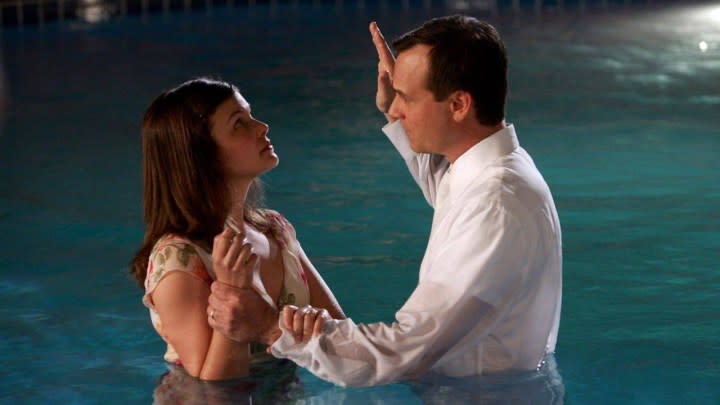
What makes Big Love such a compelling watch even nearly two decades after its debut is that the otherness of the Henricksons’ polygamy is never used in the service of making them repugnant. The concept of the antihero had not yet become ubiquitous in prestige TV when the show first aired, and Scheffer and Olsen’s avowed goal was to present a portrait of a completely foreign lifestyle with a studied sympathy.
This aim is often pursued to a fault, but it’s completely refreshing in a TV atmosphere dominated by (great) shows in which there is purposefully almost no one to root for – Succession and certain seasons of Fargo come immediately to mind. Bill and his circle, especially his first wife, Barb (Jeanne Tripplehorn), are good people, or are trying to be. Their sympathies lie with the weak and downtrodden, even when protecting those people puts the Henricksons in harm’s way. (OK, so Sevigny’s Nicki Grant is spectacularly awful, but Sevigny is so wonderful in her malignant selfishness that one revels in it rather than squirming.) Bill’s single-minded dedication to polygamy, which he calls “the principle,” may seem calculated to make you squeamish, but the show progresses at the speed of life, never rushing to justify Bill’s decision to return to a religious life that once traumatized him, nor Barb’s decision to follow him.
Big Love on HBO NOW
Bill acts rashly in business and life in service of old grudges, but his flaws are those of a person, not a character – ingrained and not necessarily unjustified, and not there for the purposes of contrivance. Through it all, one finds a genuine sympathy inculcated by the show’s cozy, poignantly real domesticity, in spite – or, more interestingly, because – of the fact we’re watching a father and three mothers do the work of the traditional family unit.
The cast is stacked
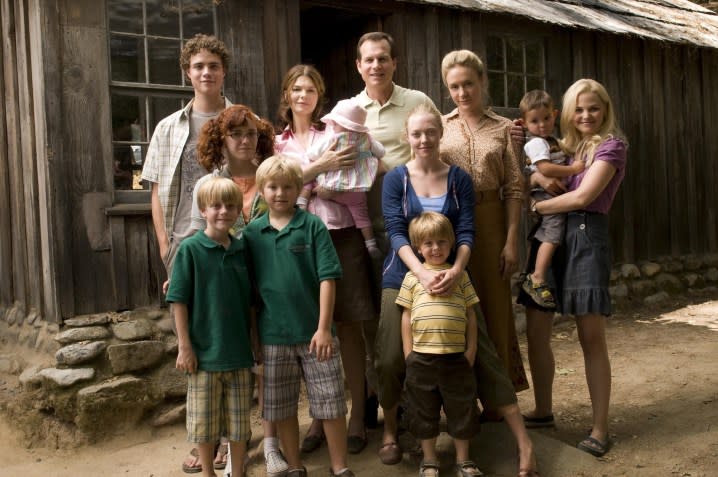
Amid a group anchored by the late Paxton, so square-jawed and solid, standout regulars include Bruce Dern, Ginnifer Goodwin, Ellen Burstyn, Philip Baker Hall, Lawrence O’Donnell, Sissy Spacek, and, in early screen appearances, Amanda Seyfried as Bill’s eldest daughter and Aaron Paul as her boyfriend. (The latter’s pre-Breaking Bad turn is further proof that Big Love exists as part of a misunderstood prestige TV continuum; Patrick Fabian, Better Call Saul’s Howard Hamlin, also joins Big Love in season 3.)
The performances span the spectrum of tonalities, from Sevigny’s calculated, calculating intensity to Tripplehorn’s expressive warmth to Grace Zabriskie’s batty Looney Tunes take on Bill’s mother. The unifying factor is that the ensemble is uniformly superb.
Writing that takes its time
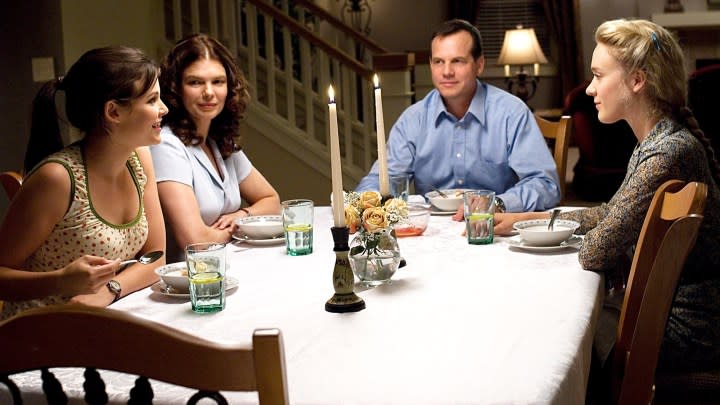
The show’s prescience and synthesis reaches its apotheosis in the season three episode Come, Ye Saints, named the Best Television Episode of 2009 by Entertainment Weekly and one of the 100 best TV episodes of all time by TV Guide. In the course of a Henrickson cross-country family journey through Mormon historical sites, threads thought to have been abandoned are unearthed and paid off, emotional catharses are reached, and the show’s deeply complex relationship with God as an actual, present figure is plumbed.
All of these things are only possible because Big Love puts in the time beforehand, allowing its narrative to advance naturally and naturalistically, creating a story that rings all the truer in the context of the imitators and successors that have aired since.
All five seasons of Big Love are streaming on Max.

